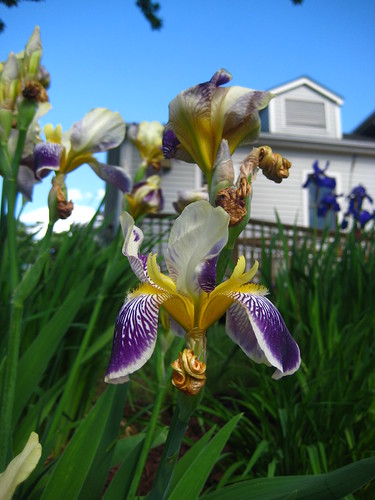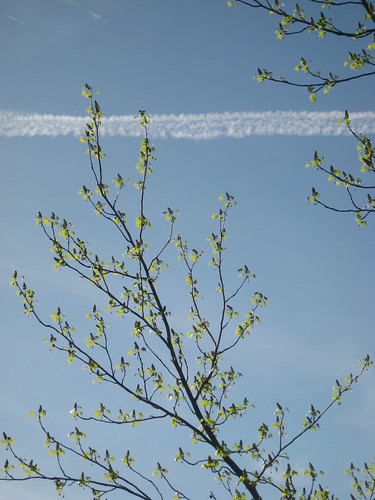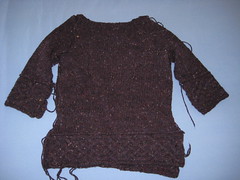- Oxford University Press just came out with a new edition of the collected ghost stories of my all-time favorite author of things macabre, M.R. James. I think this one’s destined for my collection. When I tweeted about it, a friend (recalling that James used to read his stories out loud to friends at Christmastime) commented, “I always like to think that someday I’ll time-travel to one of James’s Xmas ghost storytimes.” That’s now right up there with “attend the first night of Le nozze di Figaro” on my personal list of Things I’d Do If I Had a Time Machine.
- If this workshop is ever held again, I want to go. I mean, think of it: ghost story writing in Scotland in an old house near Loch Ness. For a week. Heaven!
- Favorite ghostly book I’ve read recently: Sarah Monette‘s The Bone Key, a collection of linked stories about an archivist named Kyle Murchison Booth who lives in a never-named city in a vaguely early-20th-century setting, and who keeps encountering cursed artifacts, revenants, ghouls, and, in one story that’s not so much scary as it is heartbreakingly sad, an incubus. Monette is an admirer of James (both Jameses, in fact: M.R. and Henry), and it shows. I didn’t find this collection entirely bone-chilling, though there are some great creepy moments, but I enjoyed the psychological depth a lot. The scars from Booth’s deeply screwed-up childhood — family curse that kills his parents; abusive guardian; horrific boarding school — feel very real without being melodramatic; in one story, he’s startled when a former schoolmate treats him with simple friendliness instead of shunning him, and that moment really resonated. (My own childhood was nowhere near that traumatic, but I remember very clearly what it was like to operate under that same assumption that no one would ever voluntarily associate with me.) This is another for the permanent collection.
- I think I’m going to join the Ghost Story Society, just for the fun of it.
- One of my so-far-unrealized ambitions: to host a ghost-story-reading party of my own. Preferably on a cold dark evening around this time of year, with the lights turned down low and my ever-growing collection of ghost story anthologies on hand to read from. Who’s in?
…because photography is fun. (It's the hobby that sort of crept up on me while I wasn't looking. Unlike knitting or blogging, I didn't really intend to get into it.) These irises were calling to me yesterday, and I'm very glad I stopped on my way home to take some pictures:
There's a poem in Alice Oswald's new book Weeds and Wild Flowers that describes a yellow iris as a woman with "one / gold-webbed glove, / one withered hand." I hadn't even noticed the withered blossoms on these irises, curled like fists, until I uploaded this image to my computer and looked at it full-size.
One more from the same set, for good measure:
We now return to the regularly scheduled wordy blogging…
How much do I love the New York Public Library's What's on the Menu? project? Inordinately, that's how much. They're dealing with a fairly common problem among libraries with digitization projects: a big collection of image files of interesting documents; the need to capture the text from those documents into a usable, searchable form; the impossibility of just OCR-ing it all; and the immensity of the work of transcription. So they built a transcription program with a super-simple front end, and invited the world to help them transcribe the collection. (See also the Transcribe Bentham project, and Project Gutenberg's Distributed Proofreaders initiative.)
The result is surprisingly addictive: you pick a historic menu from their constantly-updating list, start clicking on the names of dishes and typing transcriptions into the little box, and before long you're thinking "Hey, I should go back and look at all those descriptions of restaurant meals in The House of Mirth and figure out how pricey they actually would have been for someone in Lily Bart's financial straits." And then you marvel at the fact that travelers on the Baltimore & Ohio Railroad in 1901 could order a caviar sandwich in the cafe car.* And then you start surfing the still-growing database of dishes from the menus and wondering when, exactly, broiled plover on toast went out of style.
Which brings me to the other thing I love about this project: food history is the coolest thing ever, and I'm adding "food historian" to the list of things I would do if I had whole other lifetimes to do them in. And I also love how, when you look at the pages for individual dishes, you're presented with links out to recipe search sites, book search sites, Wikipedia, and even Flickr and Twitter. The NYPL folks evidently realized that this project could appeal to lots of people: food historians, fans of retro cookery (Gallery of Regrettable Food,** anyone?), random passersby curious about what Nesselrode Pudding was,*** home cooks who might be inspired to replicate some of the dishes on the menu.
It's a really lovely instance of making primary sources accessible to an audience that's both academic and non-; it's also a lovely example of simultaneously opening up library collections to a wider audience and involving that audience in improving the collections. As a librarian and an alt-academic (and as a foodie), I approve. And I'm looking forward to seeing what people do with the data.
* I confess that, however much of a delicacy they were considered at the time, the idea of caviar sandwiches makes me gag a bit. Which is another thing I love (well, not the gagging): the glimpses these menus offer into one area of the past that looks, in some ways, like the present, and in other ways, like those caviar sandwiches and plovers on toast, notably different.
** If you haven't yet discovered the Gallery of Regrettable Food, go now. Just be aware that it'll probably make you laugh until your ribs hurt.
*** Apparently it's a molded chestnut ice cream. I kind of want to try my hand at making it now.
More spring foliage imagery. I just can't help myself; it was a beautiful day today, and the leaves on the trees are still that supercharged fluorescent green that always leaves me a little startled that such a color is actually found in nature.
This post is for frizzyLogic, whose photographs of London plane trees and their "baubles" were in my mind today after I noticed that the sweetgum tree outside my office was producing little green bobbles of its own.
Incidentally, Wikipedia tells me that the spiky fruit of the sweetgum is sometimes called a "gumball." Hee.
I've been staring at the buds on that tree since March, waiting for them to open. Longest. Winter. Ever. But as of last week, there are finally leaves.
The oaks around campus are also leafing out like crazy:
(Actually, I think this image is one of the better pictures I've taken lately. It doesn't quite get the intensity of the colors, but I really like the way the composition turned out.)
Walking around, looking for places to stop and take pictures of leaves, I keep thinking of George Herbert's poem "The Flower," especially the parts of it that stayed with me during some of the worst moments in grad school:
Who would have thought my shriveled heart
Could have recovered greenness? It was gone
Quite underground; as flowers depart
To see their mother-root, when they have blown…
……………………………
And now in age I bud again,
After so many deaths I live and write;
I once more smell the dew and rain,
And relish versing. Oh, my only light,
It cannot be
That I am he
On whom thy tempests fell all night.
May we all recover greenness, however and wherever we manage to find it.
Somehow I managed not to post anything here for two months. Partly I've just been busy; partly it's been a rocky couple of months. Nothing dire, I hasten to add, but there's been illness and death in my family, and personal angst of the mundane and unbloggable kind, and all that combined with what's seemed like an interminably cold, gray, rainy winter — not to mention the ever-sourer national mood, which seeps into everything, much like the miserable weather — has added up to a general grimness about the mouth and a damp, drizzly November in the soul. Which hasn't exactly been blog fodder.
But at least some of that has been changing: the sun is out, at last, and my favorite cherry tree on campus burst into full bloom this week. I went by it with my camera this afternoon, because the flowering won't last much longer. So here, by way of starting up the posting again, are some pictures. There'll be some words too, in a little while.
So I frogged a sweater last weekend.
For those of you who aren't knitters, "frogging" means unraveling a knitting project. (It's a pun, because when you're unknitting something, you rip it, rip it, rip it…get it? Ribbit?) This was no partial unraveling to get to a mistake I'd discovered too late; this was a complete dismantling of the whole project. I'd been meaning to do it for some time. I'd started this particular project way back in 2007, going on four years ago, and for most of those years, it's been sitting unfinished in a basket with other projects awaiting completion. I finished all the pieces and then realized that a) I'd gotten the proportions kind of off, and b) I lacked the patience to seam the whole thing together. Here it is, in its unseamed, too-long-waisted, too-short-sleeved glory:
I'd felt bad about not finishing it for the longest time, because an unfinished concerto or poem might be performed or read, but an unfinished sweater will never be worn. And I was attached enough to the beautiful cable around the hem and the bottoms of the sleeves (my first foray into extended cabling, if I recall correctly) that I kept thinking I could fix it somehow, or magically become the kind of person who enjoys sewing.
But finally I recognized that that just wasn't going to happen. So on Sunday I sat down, picked apart the bound-off edges, and ripped the whole thing out, piece by piece. I'd expected to feel regret for all the wasted effort, but instead a sort of demented glee took over as the yarn went zip-zip over my elbow and thumb. Somehow, though I dread dropping a few stitches when I'm working on a project, it becomes fun when done on purpose and on a grand scale. Now I have a dozen or so skeins of yarn which, as soon as I've finished straightening them out, I'm going to reuse to make the O w l s sweater (clever, charming, and blessedly, mercifully seamless).
I might attempt the Kepler pattern again, but if I do, I'm going to modify it so I can make the whole thing as close to seamlessly as is humanly possible. When I started the now-frogged sweater, that wasn't something I'd have dared to attempt; now the prospect of modding a pattern is about as daunting as taking a slightly different route downtown.
There's a rather obvious parallel to be drawn with certain of my previous life experiences and the lessons learned therefrom (cough*grad school*cough): that sometimes the best possible decision is to abandon something and start over; that doing that might unleash energies that one hadn't even realized had been bound up in maintaining an unhappy status quo. I thought I'd learned that already after the great career reboot of 2003-04; but sometimes you need a metapor to make an idea stick.
(The title of this post, by the way, is from Walter Benjamin's essay "The Image of Proust," because, after all, I do reuse the yarn of my education in all sorts of ongoing work-in-progress:
For the important thing for the remembering author is not what he experienced, but the weaving of his memory, the Penelope work of recollection. Or should one call it, rather, a Penelope work of forgetting? Is not the involuntary recollection, Proust's mémoire involontaire, much closer to forgetting than what is usually called memory? And is not theis work of spontaneous recollection, of which remembrance is the woof and forgetting the warp, a counterpart to Penelope's work rather than its likeness? For here the day unravels what the night has woven. When we awake each morning, we hold in our hands, usually weakly and loosely, but a few fringes of the tapestry of lived life, as loomed for us by forgetting. However, with our purposeful activity and, even more, our purposive remembering each day unravels the web and the ornaments of forgetting.
—Walter Benjamin, "The Image of Proust," in Illuminations, trans. Harry Zohn)
In an effort to get back into writing fiction (and, hopefully, poetry as well), I've been working my way through the exercises in Julia Cameron's The Artist's Way. The one I've found the most fun so far is the one she calls "Imaginary Lives": imagine that you have five other lifetimes to pursue whatever you want to pursue; what would you do in each of them? It occurred to me that this would make an interesting meme, and that I would love to hear how various blog friends would answer the question. So here are my five; feel free to adopt this meme at your own blog or post your own five in the comments!
In no particular order:
- Dramaturg. I went through a hugely stagestruck phase in my late teens/early 20s, and there for a while in college I took theater classes and auditioned for a bunch of shows; but after a while I realized that acting wasn't really one of my talents. But being intimately involved with a production behind the scenes and being paid to do loads of research? That would be fantastic.
- Perfumer. A week ago I was chatting with an acquaintance who makes soaps and bath products and with whom I always end up talking about perfumes. "I think it would be really fun to blend my own," I said, "but I don't think I have the nose for it." "Oh, I think you do," she replied, "you just haven't trained yourself by sniffing all the different notes one at a time and learning what happens when you start combining them." I also think it would be marvelous to do what the Black Phoenix Alchemy Lab does and create scents based on myths and legendary places and poems and fictional characters.
- Book artist. I love artists' books; I love altered books; I'm fascinated by the work of small presses; I had a wonderful time at the bookmaking workshop I went to this fall; and every time I see an artist's book or a beautiful small press book, I think "I want to do that!"
- Costume designer. (Especially if I could be a costume designer for an opera company.) Another behind-the-scenes job for stagestruck people who don't necessarily want to act; see #1 above. Knitting has given me a whole new level of interest in the aesthetics of clothes, and I've always been something of a costume history geek.
- I don't know quite what to call this one, but if I had but world enough and time, I would spend at least one lifetime walking all over the world and writing books about it. "Mountaineer" isn't quite the right word: I've never really burned with the ambition to scale Mount Everest, or even Mont Blanc. I'm not interested in ropes and pulleys and serious climbing gear and oxygen deprivation; I'm more interested in just wandering wherever my feet can take me. Kind of like Alfred Wainwright but not just for the Lakeland Fells (although I could happily spend years and years wandering around the Lakeland Fells).
Over to you, Reader. If you had five extra lifetimes, what would you do with them?










